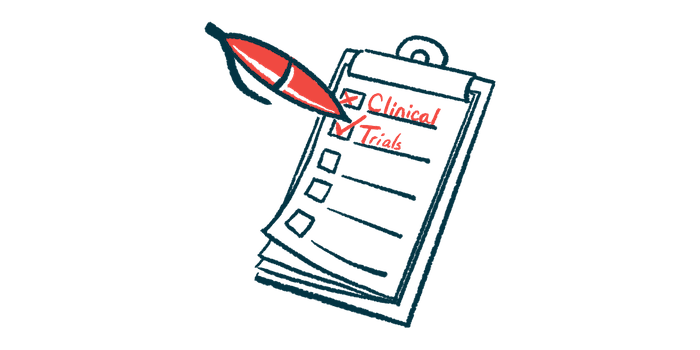Pharvaris Announces Positive Efficacy, Safety Results for PHVS416
Phase 2 RAPID-1 trial is assessing therapy's effects on adults with HAE
Written by |

PHVS416, an investigational oral therapy being developed by Pharvaris, was shown to be safe and effective in treating swelling attacks in patients with hereditary angioedema (HAE).
The therapy substantially reduced symptoms, particularly skin swelling, skin pain, and abdominal pain. It also significantly shortened how long it took for relief from symptoms to start and how long it took them to resolve, supporting its effectiveness in treating attacks.
That’s according to top-line data from the Phase 2 RAPIDe-1 trial (NCT04618211), which is assessing the safety and effectiveness of PHVS416 when given on-demand to treat attacks in adults. Findings were recently presented by the company in a live conference call and webcast.
“The data demonstrate rapid onset of action, symptom relief, and resolution of attacks, which support the further development of PHVS416 as a potential on-demand therapy for HAE,” Peng Lu, MD, PhD, Pharvaris’ chief medical officer, said in a press release. “The strength and durability of effect shown in the top-line data from RAPIDe-1, as well as the observed safety profile, has further enhanced our confidence in the clinical development strategy.”
HAE swelling attacks are caused by excessive levels of a signaling molecule called bradykinin. It triggers swelling by binding to specific protein receptors in tissues, including the bradykinin B2 receptor.
Pharvaris is developing therapies to treat and prevent these attacks. PHVS416 is a soft gel capsule formulation of PHA121, a small molecule compound that’s able to bind to the bradykinin B2 receptor, preventing bradykinin from activating it and the reactions that would trigger an attack.
“The expectation of people living with HAE is that next-generation HAE therapies should achieve the same or better efficacy than current standard of care while offering an improved duration of effect and better convenience,” said Marcus Maurer, MD, professor of Dermatology and Allergy at the Charité – Universitätsmedizin, Berlin, and the principal investigator of RAPIDe-1.
The main goal of RAPIDe-1 was to evaluate the effectiveness of PHVS416 at easing three attack symptoms (pain and swelling in the skin and abdominal pain) within four hours. The study also assessed its safety relative to a placebo.
RAPIDe-1 included 74 patients, ages 18–75, enrolled from about 30 sites across 13 countries, who were randomly assigned to receive one of three single-dose levels — 10, 20, or 30 mg — of PHVS416, or a placebo.
Results of RAPIDe-1 trial
The trial included two parts. In the first part, participants received a single dose of the therapy at the study center when they were not having an attack. In this phase, investigators focused on assessing its pharmacokinetics (how the medication is absorbed, distributed, and eliminated from the body) and safety.
In the second part, patients self-administered PHVS416 or a placebo at home to treat three clinically confirmed attacks.
Data from 156 attacks by 73 patients was used for the safety analysis, while data from 147 attacks by 62 patients made up the study’s efficacy analysis.
Investigators confirmed PHVS416 was rapidly absorbed, consistent with data from Phase 1 studies with healthy volunteers. Mean plasma levels of 13.8 nanograms per milliliter were reached within 30 minutes and maintained for about eight hours when PHVS416 was given at a dose of 10 or 20 mg, and for more than 10 hours when given at the highest dose of 30 mg.
The treatment also led to a significant reduction in the score on the three-symptom composite analogue scale, VAS-3, which ranges from 0 to 100, with a larger drop reflecting a better outcome. Specifically, compared with a placebo, patients across all dose groups saw their VAS-3 scores drop by about 16 points within four hours.
PHVS416 also shortened the time to onset of symptom relief, defined as a 30% reduction or more in VAS-3 scores. For patients given the placebo this took a mean of eight hours, for those with PHVS416, it took just over two hours.
In addition, compared with a placebo, it decreased the time to reach at least a 50% reduction in VAS-3 scores as well as the time needed for almost complete or complete symptom relief.
Patients who used PHVS416 also required substantially less rescue medications (18.9% in the 10 mg group; 10.7% in the 20 mg group; 6.5% in the 30 mg group) than those treated with a placebo (60.8%).
In general, patients tolerated the treatment well, with no treatment-related severe side effects and none that caused treatment withdrawal.
“The results of the RAPIDe-1 study represent another step towards a potential new, oral on-demand HAE treatment,” said Berndt Modig, Pharvaris’ CEO and co-founder.
Pharvaris plans to present additional data from the study at future medical meetings.






